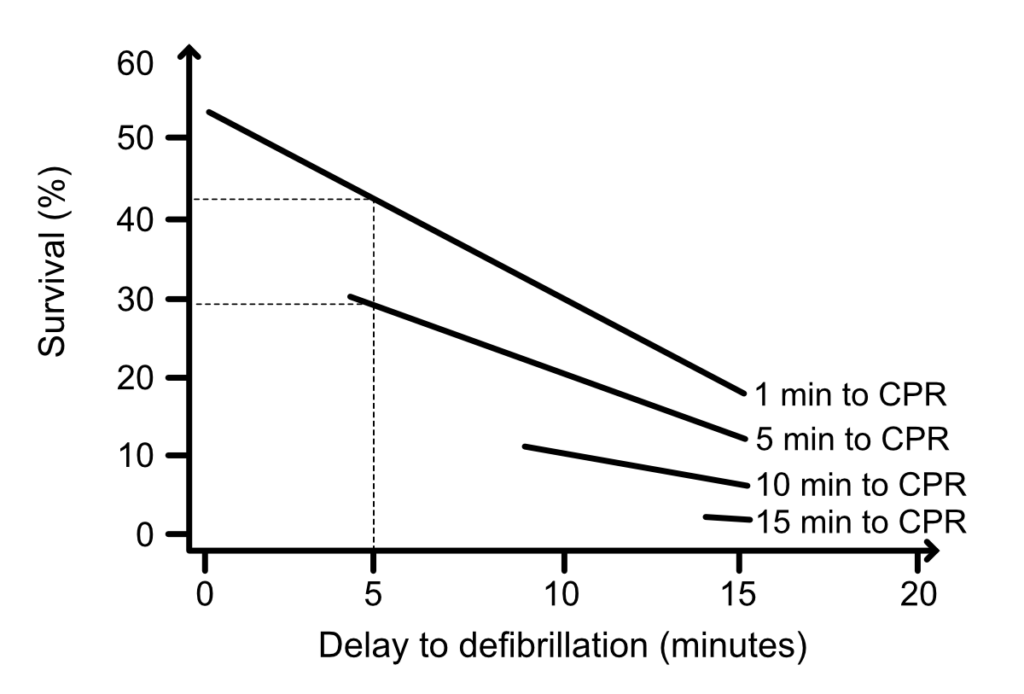The 3-Phase Model of Sudden Cardiac Arrest

Highlights
- The heart consumes approximately 30 kilograms of ATP per day (Neubauer et al), which is about 100 times its own weight. This is possible because mitochondria occupy nearly 30% of the myocardial cell volume, which enables the generation of such large amounts of ATP (Page et al). The mitochondrial density allows for complete replenishment of ATP within 10 seconds (Fell et al, Houtkooper et al). The majority of ATP produced is utilized to fuel the contractile machinery and maintain ion channel function. (View Highlight)
- ATP concentrations decline rapidly. After 5 minutes of VF, approximately 50% of the ATP remained (View Highlight)
- As ATP concentration declines, critical cell functions cease. Membrane potential, action potential, excitability and contractile function are all compromised by ATP depletion (View Highlight)
- Myocardial necrosis (infarction) commences within 20 minutes of circulatory collapse. (View Highlight)
- With each passing minute, the likelihood of successful defibrillation decreases and the risk of VF degenerating into asystole increases (View Highlight)
- In 1943, Gurvich et al demonstrated that the probability of successfully defibrillating VF after several minutes increased if defibrillation was preceded by chest compressions (View Highlight)
- after a few minutes, the myocardium become so sensitive to interruptions in perfusion that the time it takes for the defibrillator to charge increases mortality (View Highlight)
- After an interruption in compressions, it takes about 15 seconds of compressions to rebuild the coronary perfusion pressure (View Highlight)
- The ECG reflects the pathophysiological process that renders defibrillation ineffective after several minutes of ventricular fibrillation. In parallel with the reduction of ATP concentration in the myocardium, the amplitude of the VF waveform decreases. The ECG demonstrates a gradual transition from coarse VF to fine VF. Fine VF ultimately transitions to asystole and death (View Highlight)
- The majority of all deaths occur during the metabolic phase, which begins approximately after 10 minutes (View Highlight)
- biological death (brain death) occurs after 6–8 minutes of total circulatory arrest (View Highlight)
- If cardiopulmonary resuscitation is started during the metabolic phase, compressions and defibrillation are usually insufficient to save the individual. (View Highlight)
- The metabolic phase is characterized by extensive cerebral cell death and impending myocardial necrosis. Myocardial ATP levels are so low that electrical activity has ceased (asystole occurs). The remaining tissues have developed ischemia with subsequent local and global acidosis. Effective compressions can then result in reperfusion damage that exacerbates tissue damage (View Highlight)
- During the metabolic phase, brain damage and myocardial infarction develop both by ischemia (which causes cell death by cessation of critical cell functions) and toxic effects of reperfusion (induced by CPR) (View Highlight)
